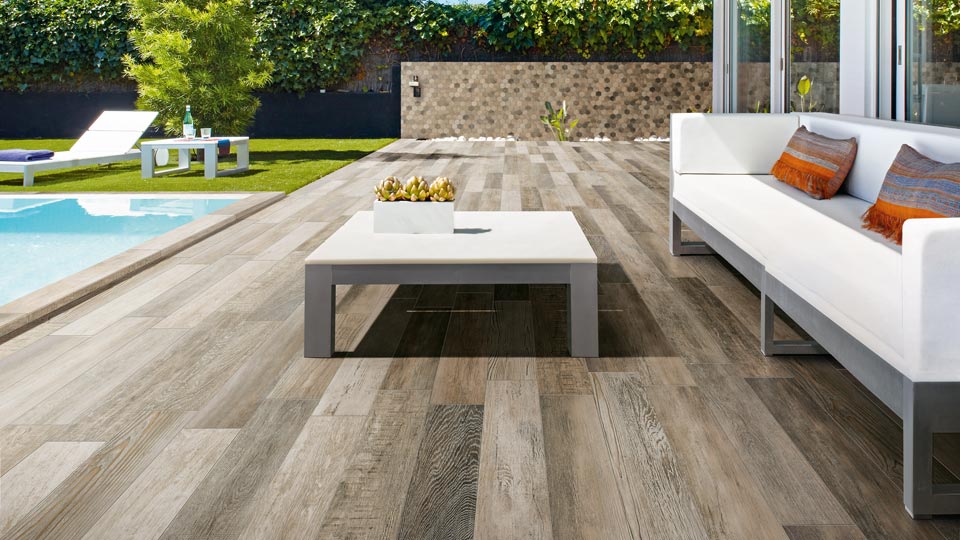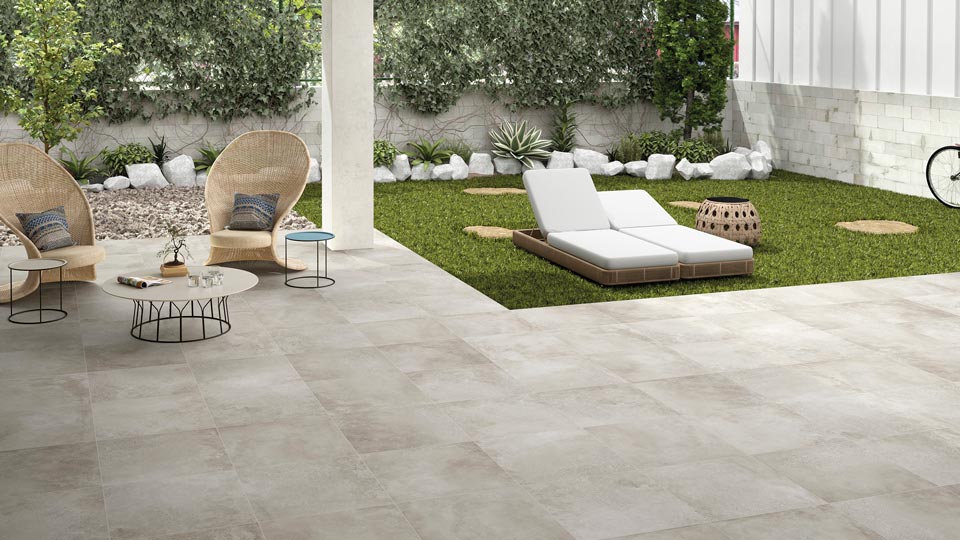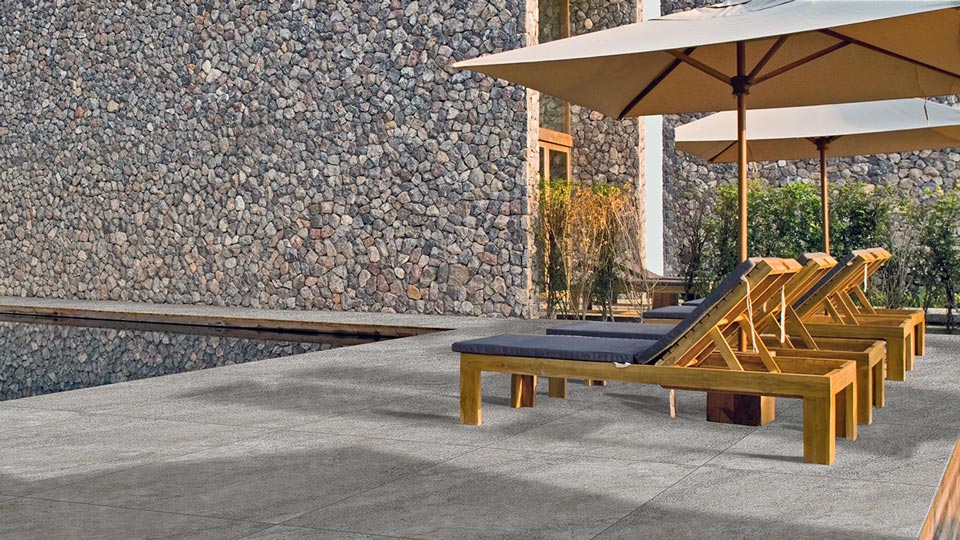There are hundreds of fascinating facets to the topic of safer, slip-resistant tiles.
We could publish a book about the history, how, what and why of tiles that take care of you in the wet, but let’s whittle it down to ten interesting facts. Brought to you with love from two of our trusted tile-pioneering partners – Sant Agostino in Italy, and Stylnul in Spain – and of course, yours truly, Italtile.

#1 There’s no such thing as a NON-SLIP tile.
Until such time as some surface genius invents a tile with arms that shoot up to support you, there is currently no such thing as a totally non-slip tile. We don’t use the term and no tile seller worth their salt should, either (although many do). The correct term for a tile engineered to offer surface friction is ‘slip-resistant’.
#2 From a little bit slippy to a whole lot grippy. S/R tile ratings.
Not all slip-resistant tiles are created equally. It’s a sliding scale (if you’ll pardon the pun) and there are international standards that rate slip-resistance. One in particular is tested in safety footwear on varying slopes with oil lubrication –the “R” rating. (Oil-wet ramp test.) R9 is the lowest slip rating, for use in areas that are never wet. R10 and R11 are recommended for areas that are sometimes wet, like the bathroom floor or the kitchen floor. R13 is the highest – for optimum outdoor slip-resistance around pools, decks, patios, gardens. Italtile’s insistence on high-end quality means all our slip-resistant tiles are highly rated – but be slip-resistant savvy and #justask before you buy.
#3 Manufacturing process of normal tiles vs slip-resistant tiles. What’s the diffs?
Well, the way they are produced – the general process – is the same. However. There are different pressing moulds or glazes. The slip-resistant tile can be of two types: A) where a pressing mould is used that creates the texture that gives grip.
This structure can be seen with the naked eye because the surface is not flat, and B) a glaze is used that makes the surface rough and ‘grippy’ – usually with the addition of alumina and corundum.
#5 INOUT technology creates an unusually smooth grip.
Our Stylnul Ceramica partners have developed a slip-resistant tile surface with a uniform coating of micro-granules that is unusually smooth and velvety to touch. This means our Civic INOUT and Rockstone INOUT are not only delightful to walk on barefoot, but also incredibly easy to wipe clean, unlike many other S/R tiles.

#6 Tile performance.
Footfall, harsh cleaning chemicals and exposure to the elements can all affect a tile’s slip-resistance over time. When you select a tile from our huge slip-resistant collection, you’ll be assured of high levels of resistance to fire, chemicals, UV light etc. However we will always caution you against using abrasive chemicals to clean your S/R floors. Please ask us about maintenance to prolong the life of your gorgeous floors.
#7 Keep it clean.
An accumulation of dirt and cleaning residues can cause your S/R floor to be less effective, so ensure you sweep and wipe clean regularly.
#8 Choose the right cleaning products.
While a damp mop and warm water is our first go-to everyday cleaning suggestion, you may need to clean up a messy spill every now and then. Speak to us about our exclusive TFC range – for tile TLC! TFC Quick Clean Everyday Tile Cleaner, for e.g., is extremely economical, hygienic – with antibacterial additives – and biodegradable.
#9 Get a grip.
Here’s a scary slippage factoid. Did you know that of the +- 8 million emergency room visits in the US every year, at least 12% of those are slip-and-fall accidents!
#10 How to fall. A last resort.
While a highly rated slip-resistant tile will minimise the chance of slippage, please remember our #1 point – even the best, most highly rated S/R tile can’t guarantee a totally non-slip future. So perhaps it’s a good idea to memorise the following safety-first steps. If you slip and feel yourself falling, 1) protect your head – tuck in your chin, turn your head to the side, bring your arms up to head level. 2) Try and turn as you fall, to land on your side. 3) Keep arms and legs bent. 4) Stay loose. 5) Try and roll out of the impact. It’s a good idea to practice these steps on a foam gym mat.

Speak to us instore or chat online about slip-resistant tile selection. We have deep product knowledge after decades of partnership with outstanding tile manufacturers; and if we don’t have the answer to your question, we’ll speak to our experts and revert asap.

































































































































































































































































Validate your login